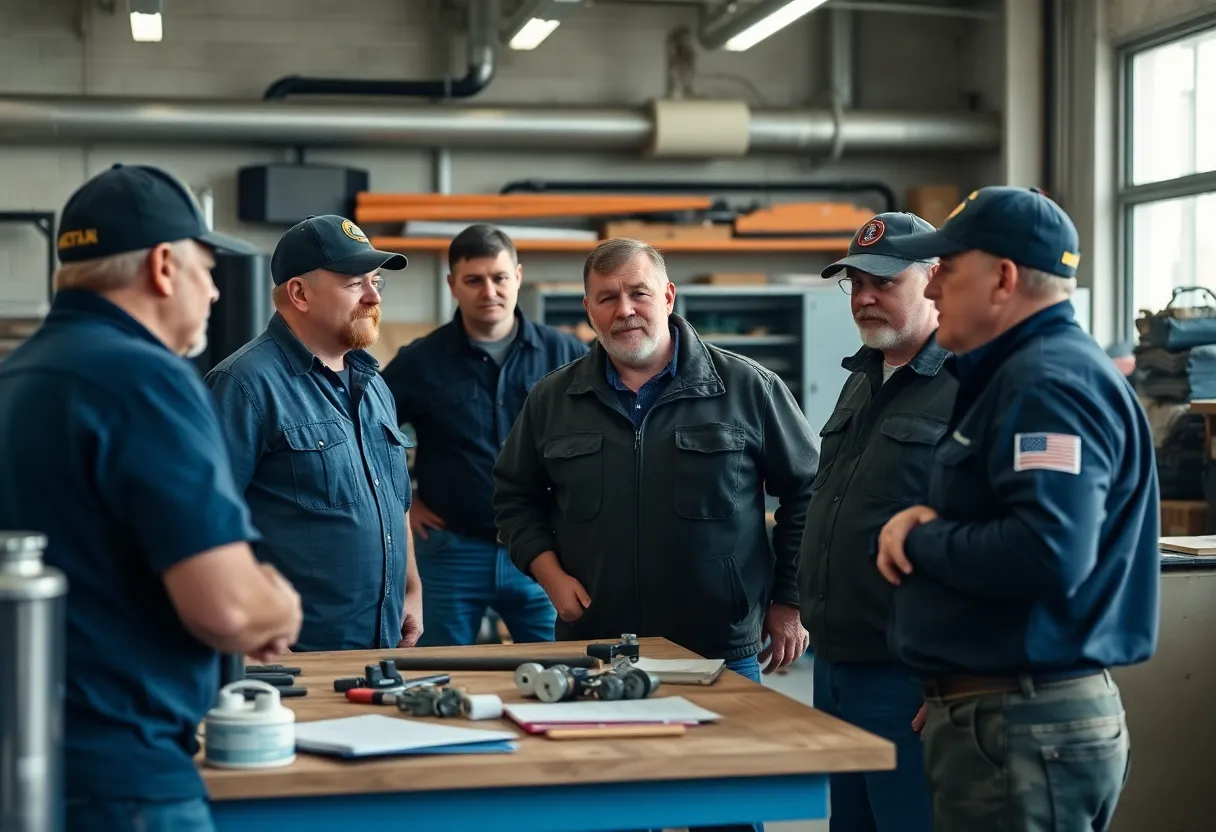Washington D.C., August 19, 2025
News Summary
The Department of Treasury and IRS have issued updated guidelines for wind and solar tax credits, tightening construction requirements as part of IRS Notice 2025-42. Effective soon, the adjustments eliminate the 5% Safe Harbor option for many facilities, focusing on substantial physical work to demonstrate construction progress. Critics express concerns that these changes could hinder renewable energy projects and lead to higher electricity prices. Industry leaders call for reconsideration amid growing clean energy demands, as a critical construction deadline looms in 2026.
Washington D.C. – The Department of Treasury and the IRS have issued new guidance tightening the construction requirements for wind and solar tax credits as outlined in IRS Notice 2025-42, effective August 15, 2025. This guidance is particularly important for wind and solar facilities under Sections 45Y and 48E, collectively referred to as the Tech-Neutral Tax Credits, ahead of the critical July 4, 2026 construction deadline.
The newly defined regulations come in direct response to an executive order from President Donald Trump on July 7, 2025, aimed at eliminating subsidies for energy sources deemed unreliable or foreign-controlled. Under the One Big Beautiful Bill, passed in July 2025, tax credits for wind and solar facilities will cease for those placed in service after December 31, 2027, unless construction has commenced by July 5, 2026.
One of the most significant changes in the new guidelines is the elimination of the 5% Safe Harbor option previously available for beginning construction on most wind facilities and solar facilities. While the Physical Work Test can still be utilized, it now emphasizes ongoing physical work rather than a monetary threshold for proving construction has started. This shift is expected to create potential hurdles for developers as only “physical work of significant nature” will qualify, excluding activities such as surveys and test drilling from being considered as a valid start.
The Continuity Safe Harbor remains intact, allowing facilities that are put into service within four years after construction begins to meet continuity requirements. Although the new guidelines provide some reassurance regarding this aspect, continually meeting the documentation requirements for a construction program is now vital, even if such specifics are not explicitly outlined in the new guidance.
The updated rules will take effect on September 2, 2025, meaning that projects that have already satisfied the 5% Safe Harbor before this date will still qualify for tax credits. Additionally, smaller solar facilities with a maximum output of less than 1.5 megawatts retain the 5% Safe Harbor option.
Amidst the rollout of these updated guidelines, the renewable energy industry has raised concerns that the stricter regulations could stall the advancement of low-carbon energy projects and subsequently increase electricity prices. Industry leaders argue that these new hurdles undermine previously established standards that were a product of extensive legislative negotiations.
Opposition to the new regulations has emerged from various corners, particularly concerning the implications they carry for growth within the renewable sector. Critics argue that these modifications could slow the momentum towards building a more sustainable energy future by making it more challenging for companies to qualify for essential tax credits.
The regulatory updates have surfaced in a context of internal disputes within the Republican party, particularly between moderate and conservative factions during the legislative process. Senator Chuck Grassley expressed satisfaction with the guidance, suggesting it provides a viable framework for the industry to align with growing energy demands, despite the broader industry pushback.
As the IRS guidance enforces a more rigid interpretation of the initial construction requirements, developers will need to prepare for more stringent standards to validate their eligibility for wind and solar tax credits moving forward.
FAQ
What is the IRS Notice 2025-42?
The IRS Notice 2025-42 outlines new guidance for wind and solar facilities under the Tech-Neutral Tax Credits, effective August 15, 2025.
What changes have been made regarding the 5% Safe Harbor option?
The new guidance eliminates the 5% Safe Harbor option for most wind and solar facilities starting construction after September 2, 2025, although small solar facilities under 1.5 megawatts can still use it.
What is the Physical Work Test?
The Physical Work Test requires that construction activities must demonstrate significant physical work rather than just a financial commitment to qualify as having begun construction.
What is the Continuity Safe Harbor?
The Continuity Safe Harbor allows projects that are completed within four years after construction begins to meet requirements for tax credits.
How will these changes affect the renewable energy industry?
These changes are expected to slow development in the renewable energy sector and could contribute to higher electricity prices due to increased project hurdles.
Deeper Dive: News & Info About This Topic
HERE Resources
Pennsylvania Governor Raises Alarm Over Clean Energy Tax Credit Cuts
Pennsylvania Launches GET Solar SWPA Program to Boost Solar Energy
Amazon Secures Major Power Purchase Agreement with Talen Energy
Tensions Rise as President Trump Faces Pushback on Legislative Agenda
Pennsylvania Advances Solar Energy Initiatives
House Republicans Push Tax and Health Care Bill with Fast-Tracked Medicaid Cuts
Pennsylvania Advances Community Solar Initiatives
Additional Resources
- The Hill: Treasury Guidance on Wind and Solar Tax Credits
- Utility Dive: Treasury Commence Construction for Wind and Solar Tax Credits
- Wall Street Journal: European Renewable Stocks Rise After U.S. Tax Credit Guidance
- Recharge News: Wind Power Stocks Surge After U.S. Tax Credit Specification
- Politico Pro: Treasury Reportedly Tightens Screws on Tax Credits for Renewables
Author: STAFF HERE PHILADELPHIA WRITER
The PHILADELPHIA STAFF WRITER represents the experienced team at HEREPhiladelphia.com, your go-to source for actionable local news and information in Philadelphia, Philadelphia County, and beyond. Specializing in "news you can use," we cover essential topics like product reviews for personal and business needs, local business directories, politics, real estate trends, neighborhood insights, and state news affecting the area—with deep expertise drawn from years of dedicated reporting and strong community input, including local press releases and business updates. We deliver top reporting on high-value events such as Mummers Parade, Philadelphia Flower Show, and Thanksgiving Day Parade. Our coverage extends to key organizations like the Greater Philadelphia Chamber of Commerce and United Way of Greater Philadelphia, plus leading businesses in telecommunications, food services, and healthcare that power the local economy such as Comcast, Aramark, and Children's Hospital of Philadelphia. As part of the broader HERE network, we provide comprehensive, credible insights into Pennsylvania's dynamic landscape.





